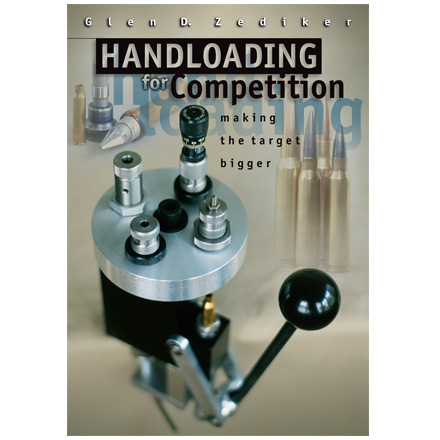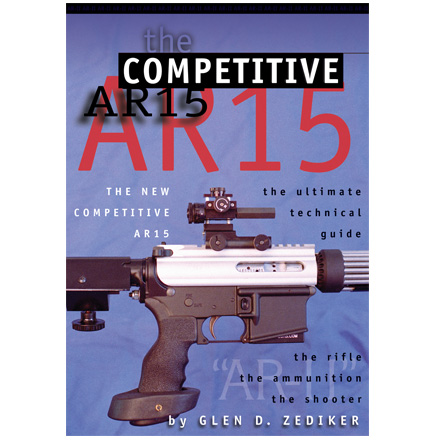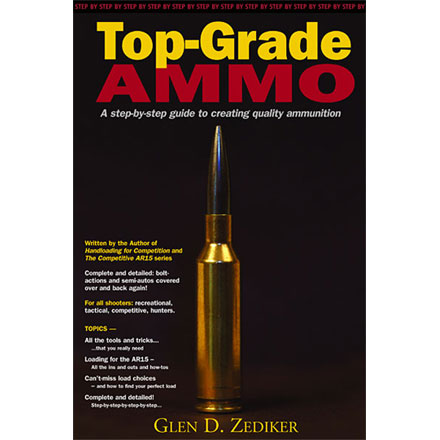Friday Feature — .204 Ruger Cooper Model 21 Montana Varminter

While many of our readers are caught in the wicked cold-spell hitting the North Central states, take heart — spring is right around the corner. That means folks will be getting ready for varmint safaris. Here’s a story that may help you choose a cartridge for your next varmint rifle.
For many years, Ken Lunde journeyed to South Dakota to visit with his father, and do a little varmint hunting. This article features Ken’s Cooper Model 21 Montana Varminter chambered in .204 Ruger. During past varminting holidays in South Dakota, Ken had a chance to try the speedy .204 against his “old reliable” .223. He came to favor the .204 for its accuracy, flat trajectory, and superior performance in the wind. Ken told us: “I love my .223, but the .204 has the edge for Dog-Town duty.”
The Cooper Montana Varminter in .204 Ruger
by Ken Lunde
Photos Copyright © Ken Lunde, All Rights Reserved
I’ve been a big fan of Cooper Arms rifles ever since my dad introduced them to me a few years ago. I prefer Cooper Arms rifles over others because they perform as they should out-of-the-box, and have outstanding workmanship and beauty. You get form and function. You don’t need to choose one over the other. For the price one pays, Cooper Arms rifles are a great bargain. I mount a quality scope, usually a higher-end Leupold with a 40mm objective, go through barrel break-in, and they always perform extraordinarily well. I should state that all of my rifle shooting is geared towards hunting. In other words, any shooting I do on paper is treated as preparation for using the same rifle for hunting, whether it’s for varmints such as prairie dogs, or for larger game.

Cooper Varmint Rifles–Components and Variations
The featured rifle is a Cooper Arms M21 Montana Varminter (aka “MTV”) chambered in .204 Ruger. It has a 24″ varmint-taper stainless steel barrel with a 1 in 12-inch twist. This twist rate seems to be typical of .204 Ruger barrels from other manufacturers. The stock is AA+ grade Claro Walnut, and has the varmint fore-end, “Buick” vents, and steel grip cap that are standard on the Montana Varminter configuration. Among Cooper’s three wood-stocked varmint rifle configurations — Varminter, Montana Varminter, and Varmint Extreme — I prefer the Montana Varminter as it seems to be the best balance of value versus features. Plus, I like the “Buick” vents. They’re very pleasing, at least to my eyes. Maybe that’s why I own seven of them, in M21 and M22 actions, and in a variety of calibers. [Editor: Ken’s father has a near-identical .204 Ruger Cooper, with consecutive serial number.]
For this rifle, I decided to mount a Leupold VX-III 6.5-20×40 LR scope with the Varmint Hunter reticle. The rifle came with Leupold STD bases in Matte finish, and I used Leupold 30mm STD rings in Medium height and Matte finish. I took the time to align the bottom rings on the bases, and properly lapped them. Other than mounting the scope, no custom work was done, because none was necessary. The trigger is superb out-of-the-box, which is typical of Cooper rifles.

Load Development and Accuracy
 I first tried factory ammo, loaded with Hornady 32gr and 40gr V-Max. The 32gr load shot the best—five-shot groups were slightly larger than a half-inch at 100 yards. My dad heard that Alliant Reloder 10X was a good powder for this cartridge, and he worked up a load using the Sierra 32gr BlitzKing bullet. He found that 26.5 grains was the right amount for his rifle. Considering that my rifle was probably made on the same day, having a consecutive serial number, I decided to try my dad’s load, along with a half-grain up and down, meaning 26, 26.5, and 27 grains of powder. I, too, found that my rifle prefers 26.5 grains of RL 10X. With this load, I’ve been able to shoot consistent quarter-inch, five-shot groups at 100 yards. Cartridge OAL is 2.353″, or 1.990″ measured from the ogive.
I first tried factory ammo, loaded with Hornady 32gr and 40gr V-Max. The 32gr load shot the best—five-shot groups were slightly larger than a half-inch at 100 yards. My dad heard that Alliant Reloder 10X was a good powder for this cartridge, and he worked up a load using the Sierra 32gr BlitzKing bullet. He found that 26.5 grains was the right amount for his rifle. Considering that my rifle was probably made on the same day, having a consecutive serial number, I decided to try my dad’s load, along with a half-grain up and down, meaning 26, 26.5, and 27 grains of powder. I, too, found that my rifle prefers 26.5 grains of RL 10X. With this load, I’ve been able to shoot consistent quarter-inch, five-shot groups at 100 yards. Cartridge OAL is 2.353″, or 1.990″ measured from the ogive.
I am using Winchester brass, Federal 205M primers, Alliant Reloder 10X powder, and Sierra 32gr BlitzKing bullets. I use Forster dies, and load with a Forster Co-Axial single-stage press. Here are two typical targets. As you can see, this .204 can shoot.
 |
 |
Cartridge Smack-Down — .204 Ruger vs. .223 Remington
Ken made these comments when he first tested his .204 Ruger vs. his trusty (and very accurate) .223 Remington: “I brought along two rifles. The first was my ‘proven’ varmint rifle, the one chambered in .223 Rem. It has stunning wood, and clearly escaped the factory with AAA grade Claro Walnut. That rifle also shoots consistent five-shot, quarter-inch groups at 100 yards. For the .223, my preferred load uses Winchester brass, Federal 205M primers, Hornady 40gr V-Max bullets (non-moly), and 26.2gr of Vihtavuori N133 powder.
I found that I very much enjoyed shooting the .204 Ruger rifle, which explains why I used only the .204 Ruger during the second trip, although I also brought along the .223. Why did I favor the .204? Well, those little 32gr bullets really zing out of the barrel, with a very flat trajectory, like a .22-250. And, to my surprise, they buck the wind very well, perhaps even better than .223. While I am no ballistics expert, I think that this may be due to its high velocity, clearly over 4,000 fps.”























